One of the things each tourist admires when traveling Sicily is the large variety of ceramics. The tradition of ceramic production dates back to prehistorical times and this art is best developed in the city of Caltagirone, a must-see destination in Sicily. The name of this town, located in the Val di Noto, a UNESCO heritage site famous for its Baroque cities, is believed to derive from the Arabic word qal’al-al-ghiran, which means in Arabic ‘Fortress of the Vases’.
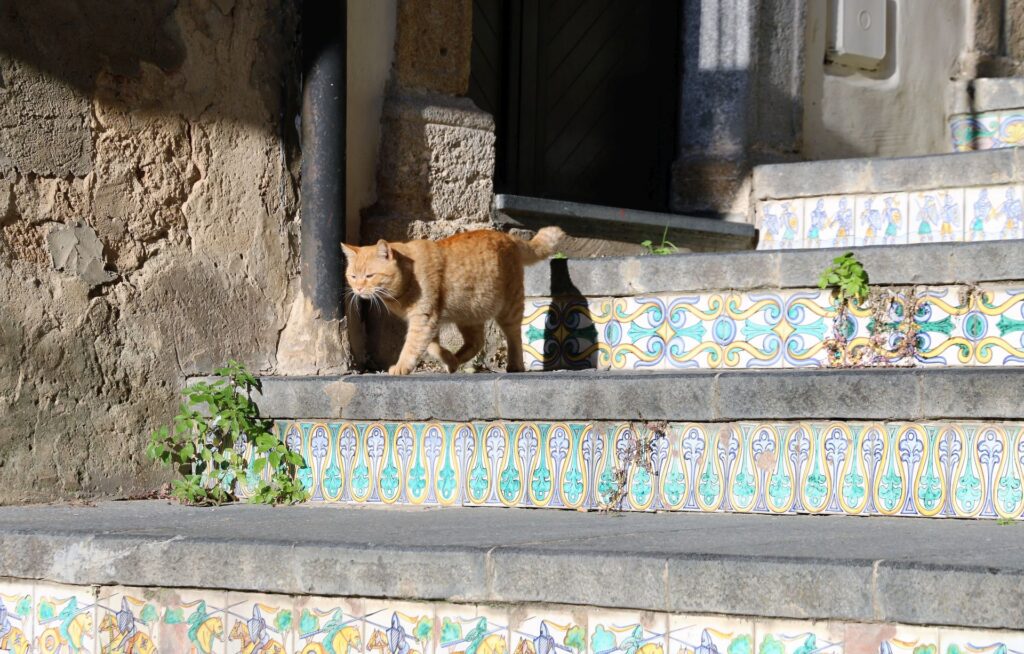
During our visit of Caltagirone, we had the idea as if we were walking through an open-air museum. And the most famous landmark was, no doubt, the magnificent staircase of Santa Maria del Monte, built in 1606. This staircase (142 steps), covered with colorful ceramic tiles, connects the old town with the new one.
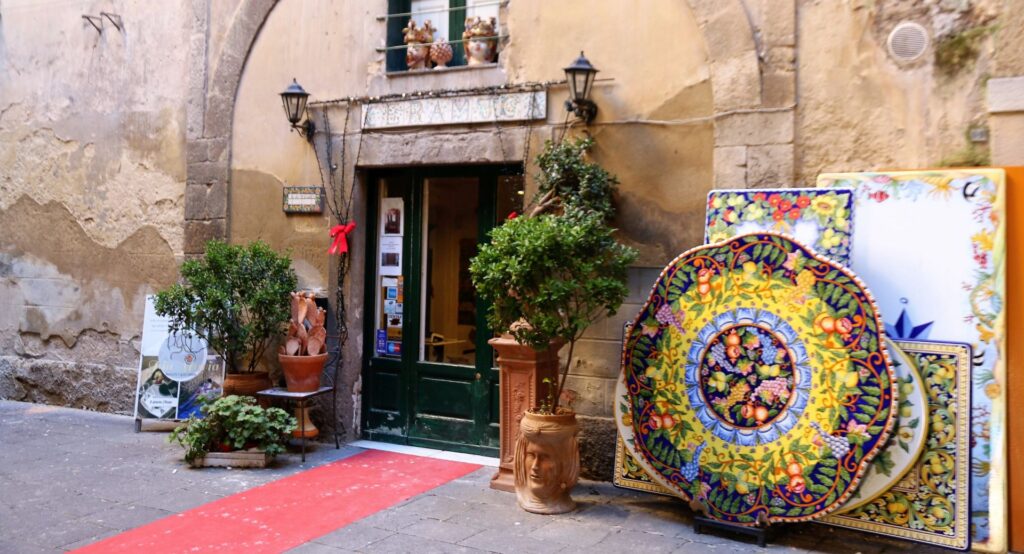
Strolling around the narrow streets, we found many artisan shops producing and selling maiolica-objects such as plates, tiles, vases, Nativity scenes and Trinacia’s.
The Trinacria is the three-legged woman that symbolizes Sicily. First adopted in 1282 by the Sicilian Vespers, it is currently the official flag of the autonomous Sicilian region. Officially, the Trinacria became the Sicilian flag in 1943, during the World War II.

Another typical Sicilian ceramic object, particularly manufactured in Caltagirone, is represented by the “teste di moro” (Moor’s heads), which have now become the most important symbol of the island.
These head-shaped vases are often put on balconies or windows and you can find them all over Sicily. Their origins date back to the period of Arab domination in Sicily, which left an important imprint on culture, gastronomy, language and folklore.
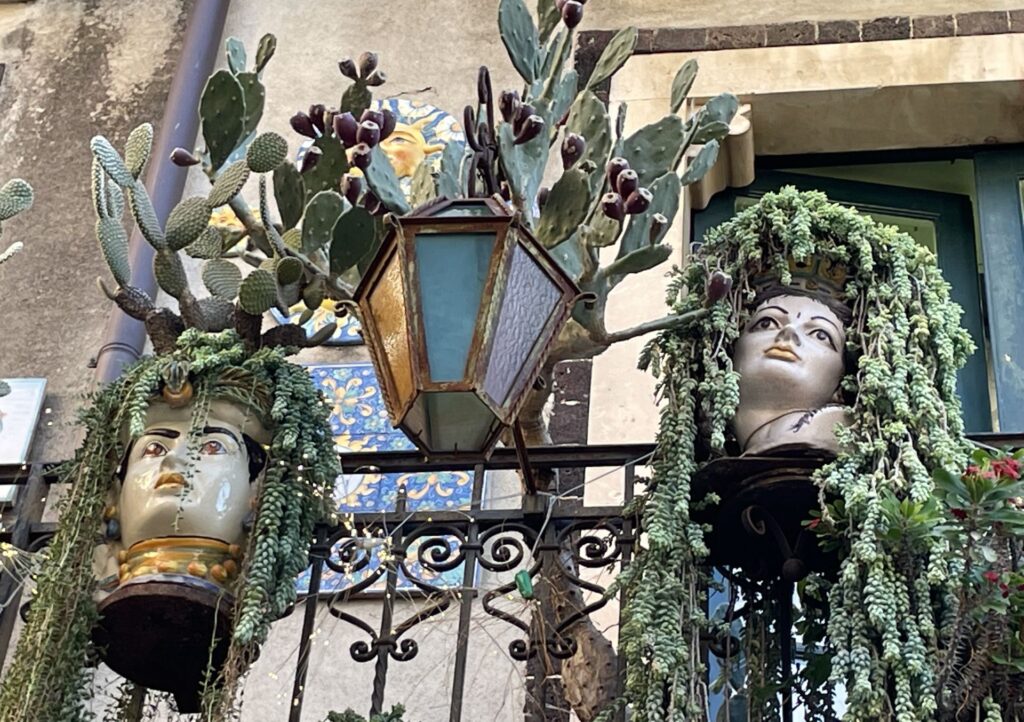
But what do these Moor’s heads have to do with the Arab domination?
Well, there is a legend saying that they represent a memory of a love affair that ended in a tragedy.
This ancient legend says that around the year 1100 there was a handsome young girl living in the Kalsa district of Palermo. She spent her days inside her palace, looking after the beautiful plants and flowers on her balcony. One day, a charming young Moor passed under the girl’s balcony. As soon as he saw her, he fell in love with her and decided to have her at all costs. Without delay he entered the girl’s house and declared his love. The girl returned his feelings, but unfortunately, she did not know that the Moor would soon leave her to return to the East, where his wife and children were waiting for him.
When the girl learned the truth about this, she was blinded by love and jealousy. She waited until nightfall, and as soon as the Moor fell asleep, she killed him and cut off his head, so that he would stay with her forever. From the head she made a vase. She planted some basil in it and put it on display on the balcony. As she sowed and watered the basil with her tears., the plant grew luxuriantly. This aroused passers-by, seeing this particular vase made in the shape of the Moor’s head, to start manufacturing terracotta vases in the same shape.
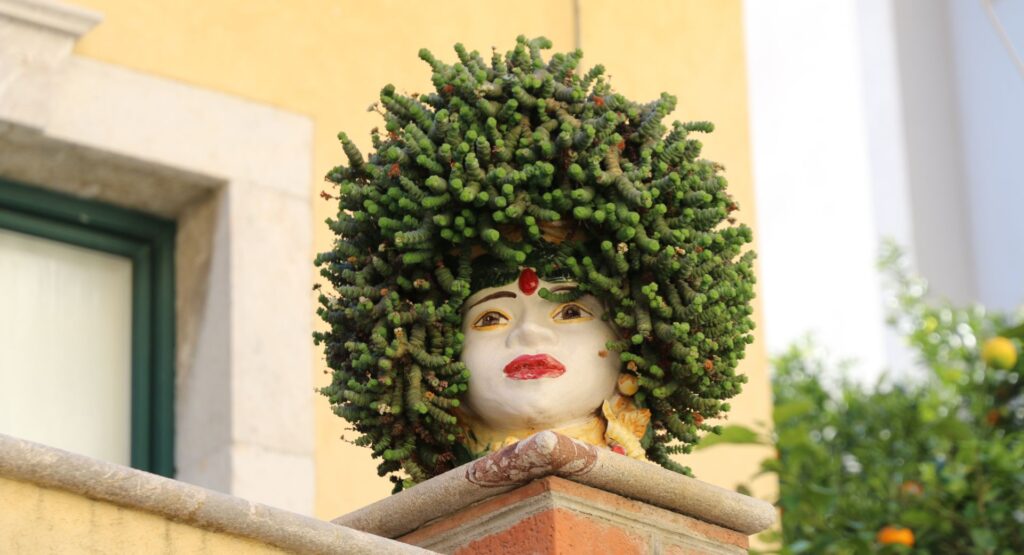
Today’s “teste di more” are hand-painted and decorated with geometric or plant motifs, using the colors of blue, green and golden yellow. They depict the face of a dark man usually accompanied by a young white woman.
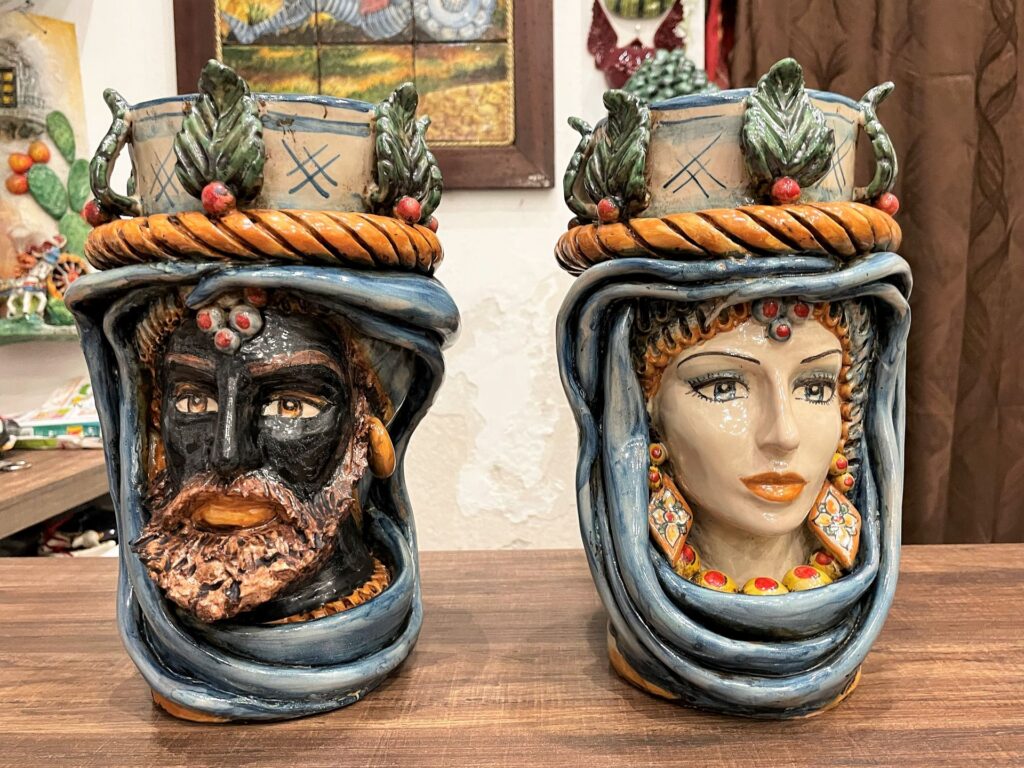
What a cruel story, isn’t it? Nevertheless, we bought two Moor’s heads and put them in our living room as an everlasting memory of our magnificent stay in Sicily!
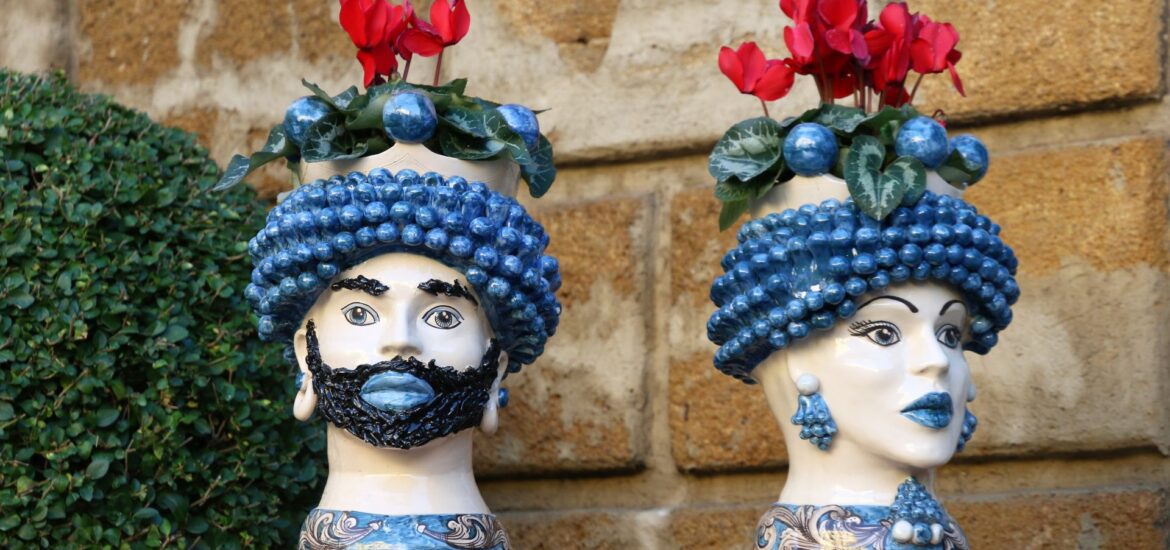
Great to see that a city has kept its traditions going for century’s!